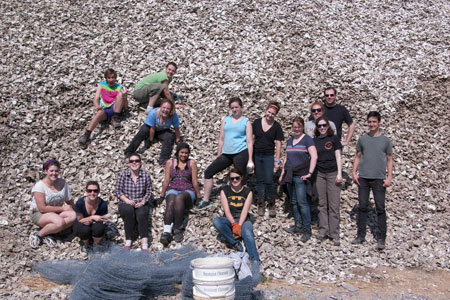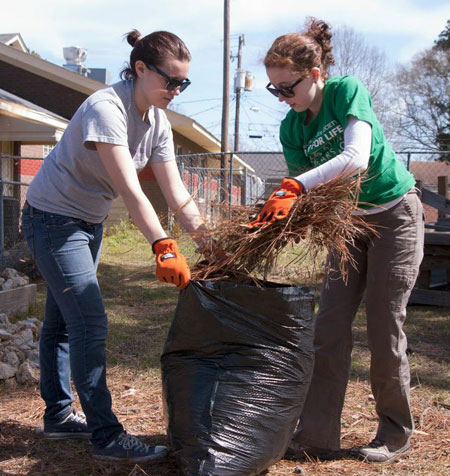Community service is spring vacation

Several Emerson students passed on party-like vacations this spring break to shingle roofs, tutor public school students, and serve in soup kitchens as part of the Alternative Spring Break (ASB) program through the Office of Service Learning and Community Action.
Forty-three students and seven faculty and staff members spread across four teams spent their break serving communities through ASB. They focused on education issues in Boston, Massachusetts; immigration in El Paso, Texas; trail conservation in Nantahala National Park in North Carolina; and hunger and homelessness in Biloxi, Mississippi.
“Alternative Spring Break is an opportunity to get out of your bubble and serve the community, and understand what is going on out there,” said Katie Prisco-Buxbaum ’14, a student trip leader.
“The opportunity to immerse yourself in service as a means of understanding the challenges faced by a community is an invaluable part of what ASB offers,” said Claude Bartholomew, ASB advisor and administrative associate in the Office of Service Learning and Community Action. “I am constantly reminded by students that ASB provides a life-changing experience.”

Bartholomew said students “return to campus with a renewed appreciation for people and their experiences, and a dedication to continue to serve after the trips.”
“The impact of this program can be felt throughout the year and often becomes a lifelong habit for participants,” he said.
Students in El Paso worked at a number of different agencies and shelters including an after–school youth program, food pantry, and women’s shelters. Students also worked in a community garden and helped teach an adult English class.
The El Paso group befriended a Mexican immigrant who cooked a traditional meal for everyone. She shared details of her experience crossing the border without proper documents in order to flee an abusive husband and provide a better life for her family.
“What she had to go through was traumatic,” said Naomi Petrovsky ’15, the El Paso trip leader. “She went from nothing—no home, no family—and continued to work hard. Now she has her own home and her children are here legally. It was shocking to hear what she went through, but we needed that.”
In North Carolina, students got their hands dirty at Nantahala National Park working on the Appalachian Trail. They built steps, cleared erosion, and hauled logs to create trail boundaries.
“Some of my most memorable moments were watching the relationships of my trip members grow.”
–Jamie Bogert ’14, the North Carolina trip leader.
“Some of my most memorable moments were watching the relationships of my trip members grow, seeing them learn from each other and be really open,” said Jamie Bogert ’14, North Carolina’s trip leader. “There were minor hiccups here and there, but everyone handled it with a positive attitude and we were able to adapt to anything.”
Students in Biloxi also adapted to unexpected situations. While the group embarked on the trip expecting to work in shelters and soup kitchens, they found themselves repairing houses that were damaged by tornadoes, cutting down trees, and bagging fossilized oysters to aid in rebuilding local reefs.
“It was a lot more manual labor than we were anticipating, but everyone was willing to take it all on,” said Christian Bergren-Aragon ’14, the Biloxi trip leader. “Physically, we could see the work we did in four hours. I’m very proud of the service we accomplished.”
Even though the students have returned to campus exhausted, many have already begun planning for the 2014 ASB trips.
Categories